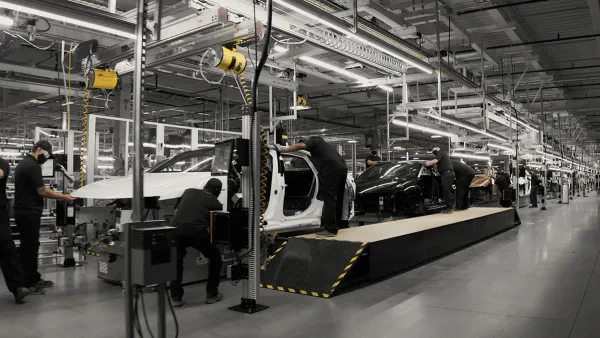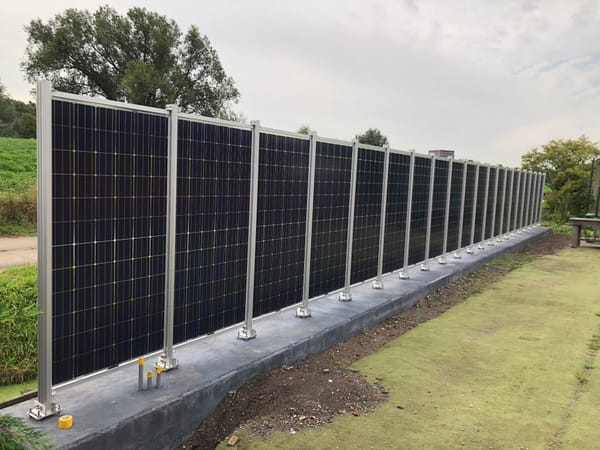Non-transparent carbon neutrality and the hydrogen rainbow
In theory, carbon offsets create a market economy for firms that help the environment, while allowing companies that are bad at the environment but good at making money to keep doing what they do best.
There wasn’t a whole lot of big climate news this week, so I’m doing a new thing and offering up some longer explainers on a couple of topics I’ve been batting around for a while. Let me know if you like this format.
1. Carbon neutral’s transparency problem
Carbon offsets are a cool idea with a few big problems. They’re cool because they encourage companies that are good at sucking carbon out of the air to get paid money by companies that put carbon into the air. In theory, carbon offsets create a market economy for firms that help the environment, while allowing companies that are bad at the environment but good at making money to keep doing what they do best – and then in theory, both the environment and money making economy benefit. Yay, capitalism!
A recent Bloomberg study found that while offset projects are a $2 billion industry today, they could become a $1 trillion industry by 2037. That promise, along with lots of dirty companies that want to arbitrage their plans to keep being dirty, with throwing cheap cash at the problem, is focusing a lot of attention on how to make the market economics of offsets work.
But market economies function best when there’s full transparency, so it’s hard to hide dirty deeds, which it turns out capitalism likes to do a lot, because dirty deeds so often make more money than being altruistic. When it comes to carbon offsets, there’s at least two major non-transparent parts: Where the offset projects operate, and who regulates the offset projects.
Most carbon offset projects come in the form of maintaining giant forests, which by their very foresty nature, are in remote places that are hard to get to and hard to oversee. Places like Borneo, Zimbabwe, Cameroon, and the Amazon. As a result, whether or not there’s logging, roadbuilding, etc. going on in these offset places is hard to confirm, and costs a lot of money to regularly monitor. So usually, you just have to take the offset projects’ word for it.
And that leads to the second problem: Who regulates the projects. As you might have guessed, it’s tough to ensure rule of law or even consistent government policies in places like Zimbabwe and Cameroon, so if you have a problem with an offset project operator, you’re pretty much out of luck.
All that came into clear focus this week as Zimbabwe, which is the 12th largest producer of carbon offset projects, managed to pull off two amazing things at once. First, they informed everyone who has an offset project underway in Zimbabwe, that at least half of all profits must go to Zimbabweans (e.g. people connected to the government). This was a big surprise to companies running offset projects there, but since so much money is being made by just letting forests just stand there and do forest things, it didn’t seem to sway interest in more offset projects.
Then, to really underline how much Zimbabwe has figured out how much carbon offset projects don’t care, the country announced they were launching an offset registry and trading center at the Victoria Falls Stock Exchange. To give you confidence in this plan, here is a picture of the exchange’s not huge trading floor, ready to manage billions of investment dollars.
Believe it or not, the complete lack of transparency and regulatory enforcement of offset projects does benefit someone! Large companies, like Delta Airlines, get to say they are carbon neutral, even though nobody can really say for sure their offsets are real, or measure up to what they say they are. So, next time you hear a corporate claim of “carbon neutral”, take it with a big grain of salt.
2. Taking a look at the hydrogen rainbow
From many perspectives, hydrogen is a dream fuel. It burns clean, creating no particulates, toxic gasses, or greenhouse emissions. Because it’s the most basic element in the universe (just one electron, one proton) there’s lots of it everywhere and encased in almost everything around us.
But it has a few problems, because it’s just one electron big, it’s actually very small, and can leak out of container microfractures. And while it has lots of energy by weight, you have to cool it down to -423 degrees Fahrenheit to turn it into a liquid, which then requires a container that can sustain high pressure containment.
Because it has so much energy by weight – more than most fossil fuels – hydrogen is a great fuel source for projects that need a ton of focused energy like steel forges and jet engines. For now, the element’s small size (one electron) means it’s a challenge to figure out how to create containers for airplanes at scale. Jet travel by hydrogen fuel would be the golden ring for hydrogen.
In the meantime, where’s lots of anticipated industrial uses for hydrogen, especially in light of the EPA’s new power plant greenhouse gas emissions rules, which would encourage many power plants to switch to hydrogen.
The thing is, hydrogen doesn’t just exist in pools, you have to separate it from other elements with electrolysis, and to do this, you need energy. The sources of energy used are identified with a rainbow of names, from dirtiest to cleanest.
Gray – Fossil fuel driven
Blue – Fossil fuel driven, but carbon is sequestered and stored.
Pink – Nuclear power driven
White – Naturally occurring hydrogen sucked out of the air
Green – Renewable energy drives the process
Gold – Naturally occurring pools theoretically deep in the earth’s crust
While “gold” hydrogen may exist, the majority of energy today is going into harvesting the element through pink or green methods. For instance, the U.S. Department of Energy is funding research at nuclear power plants to use off-peak generating capacity to harvest hydrogen. Green hydrogen projects, while promising, require using renewable power that is otherwise in demand for powering the grid. We shouldn't’ expect many of these projects to get off the ground until there’s an excess of renewable power on the grid – which is probably at least a decade in the future, if not more.
Other Things Happened
- Over 12,000 people would die if a heatwave and blackout simultaneously hit Phoenix, says a recent report. Last week, grid operators warned that two-thirds of the U.S. should expect blackouts this summer.
- Twenty oil and gas producers were responsible for half of the industry's methane emissions in the United States in 2021, according to EPA.
- New York State set a record last week, powering 20% of its grid with solar for one house. About 3.3 million homes.
Congratulations! You made it to the end. Here’s a nifty guide for ridding yourself of junk mail, forever.





